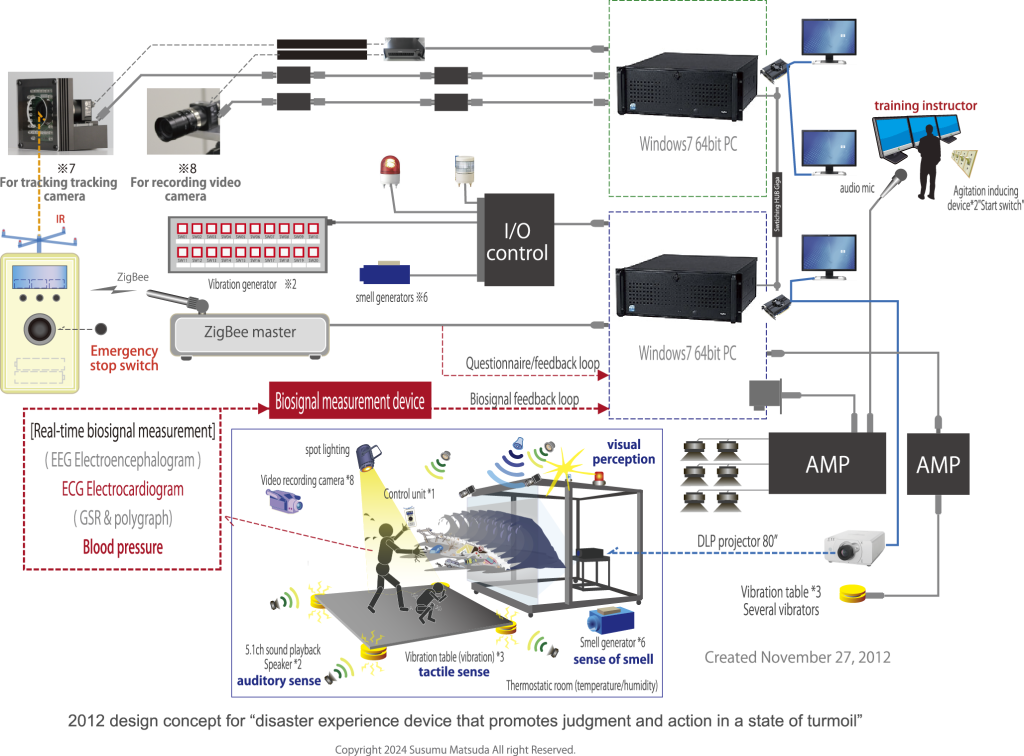I felt the importance of assessing danger and taking immediate action when people are shaken by a disaster. The way to increase your survival rate in a disaster is to detect danger as early as possible, make the decision to escape, and take action to escape. This increases the survival rate. The worst situation is to be unable to move during a disaster. Training is required to quickly detect danger, make judgments, and take action to escape. In 2012, together with research institutes, we conceived and realized the idea of creating a device that recreates panic situations and allows people to experience disasters while encouraging them to feel agitated.

Because experiencing a disaster can pose a risk of psychological damage, we decided to stop using stereoscopic viewing, which would give a more realistic experience, and instead chose a screen method that emphasizes the actual size and allows multiple people to experience the experience at the same time. In order to prevent mental disorders, we will incorporate a mechanism to cancel the experience using an emergency button. Emphasis is placed on physical sensations other than vision, and a system is built in to reproduce the five senses such as hearing, touch, smell, skin sensation, and balance. We have also created a shaking device that can be operated by an instructor to shake people up. By combining these elements, we have built in a system that adjusts the danger sensitivity when experienced to suit the individual. At the same time, a wireless questionnaire evaluation system that performs subjective evaluations was developed and realized as a mechanism to evaluate the educational effects of the hands-on experience. In order to perform objective evaluations, we only considered the possibility of implementing an evaluation system that captures biological signals.